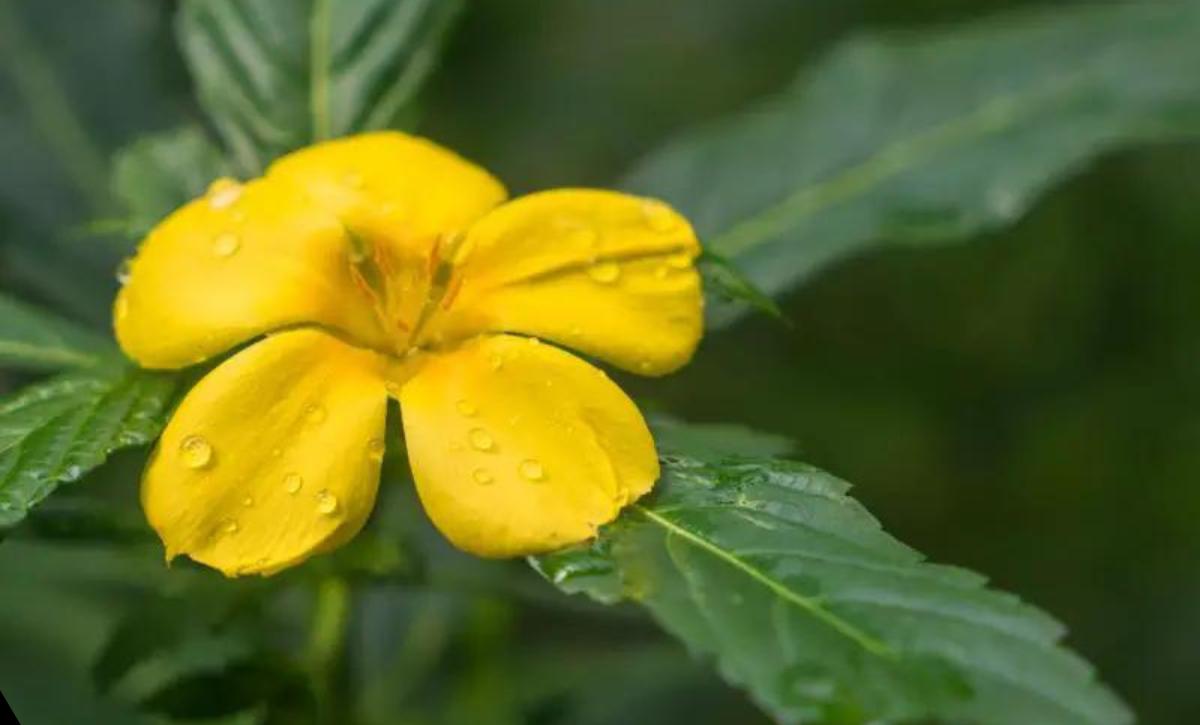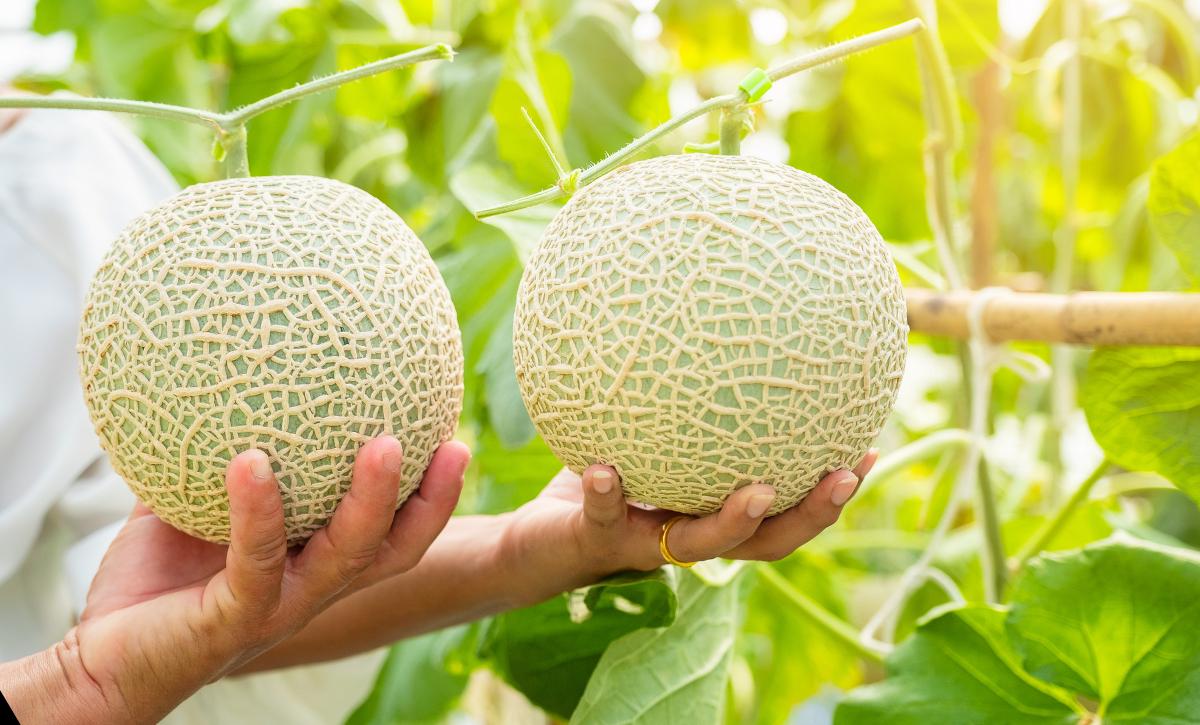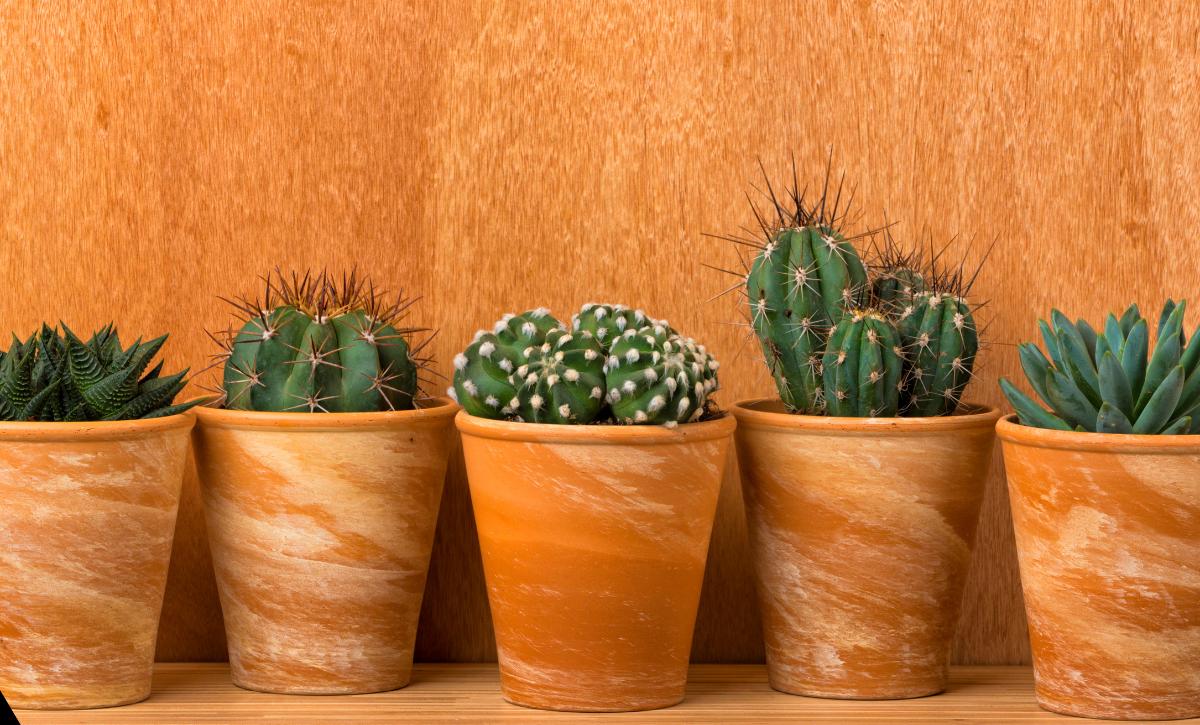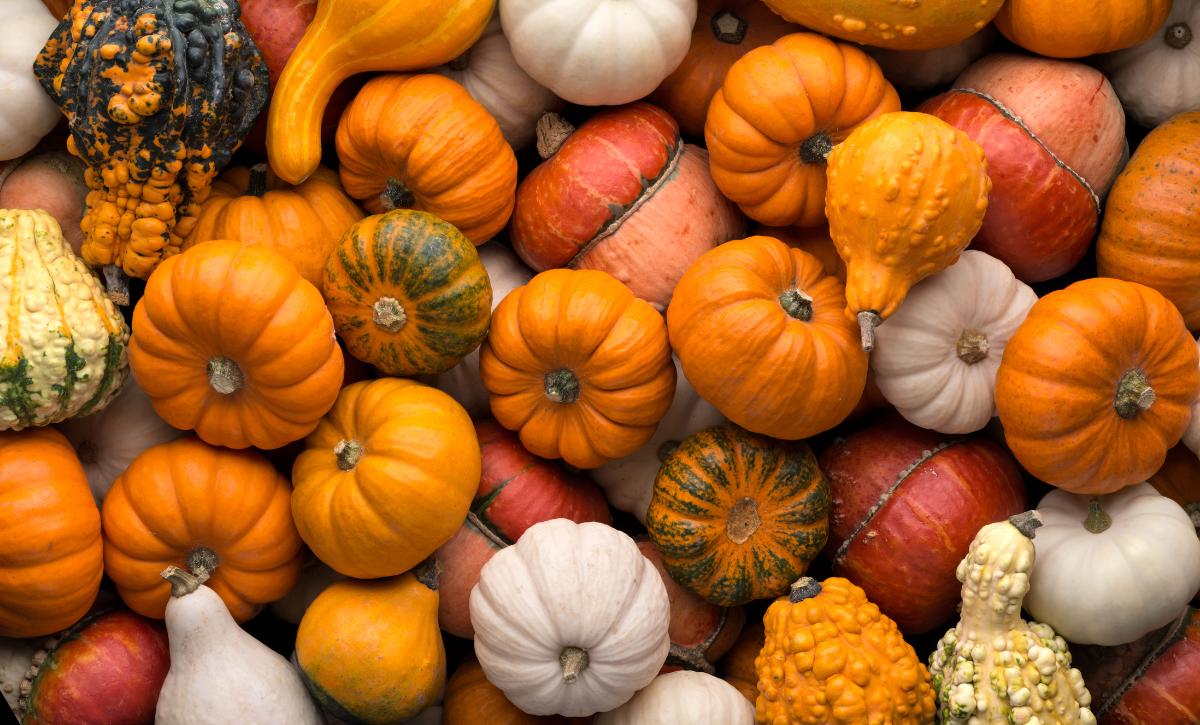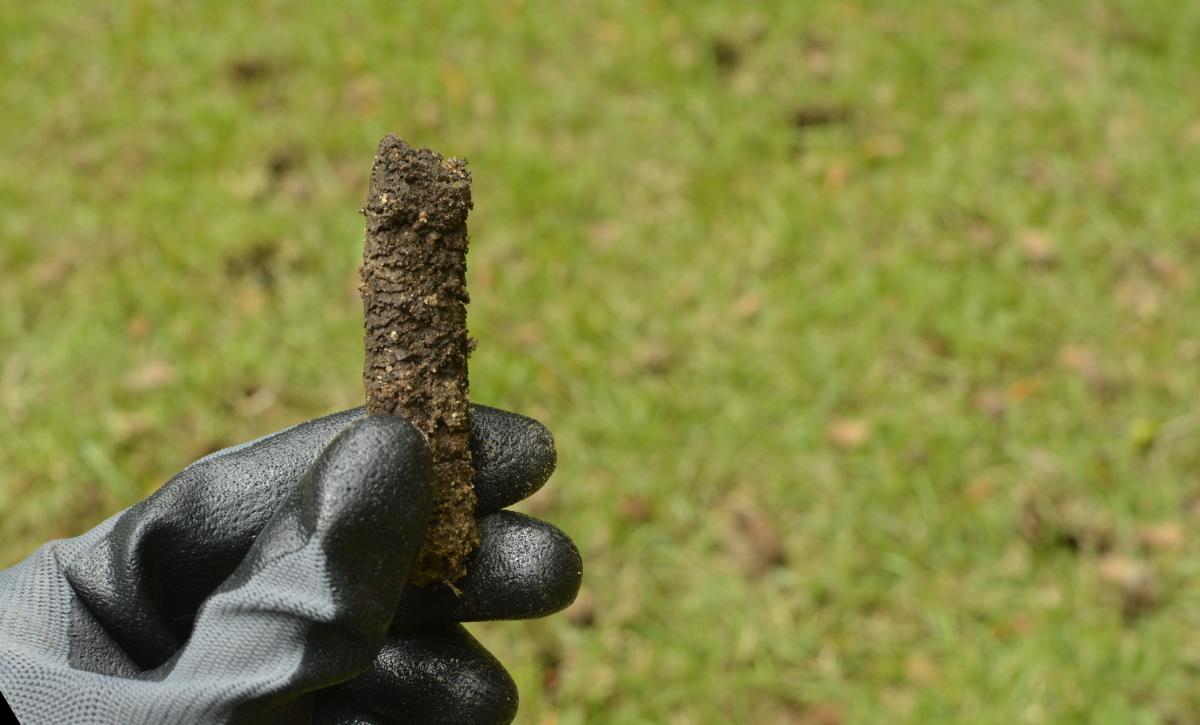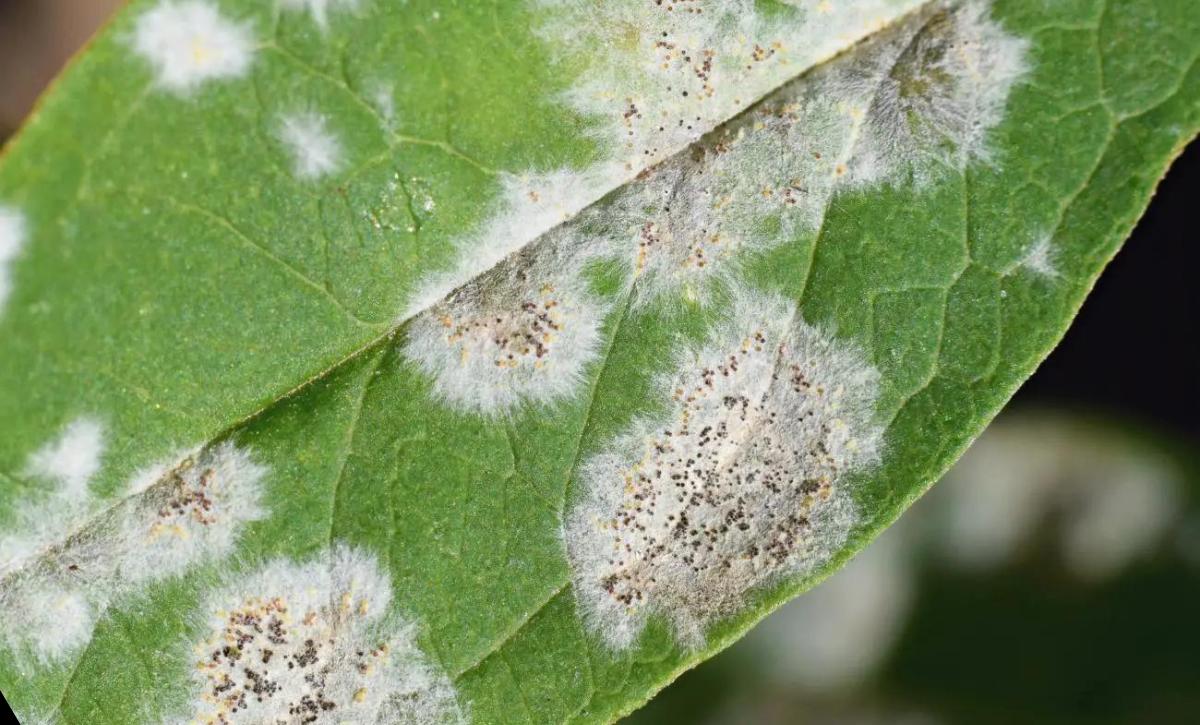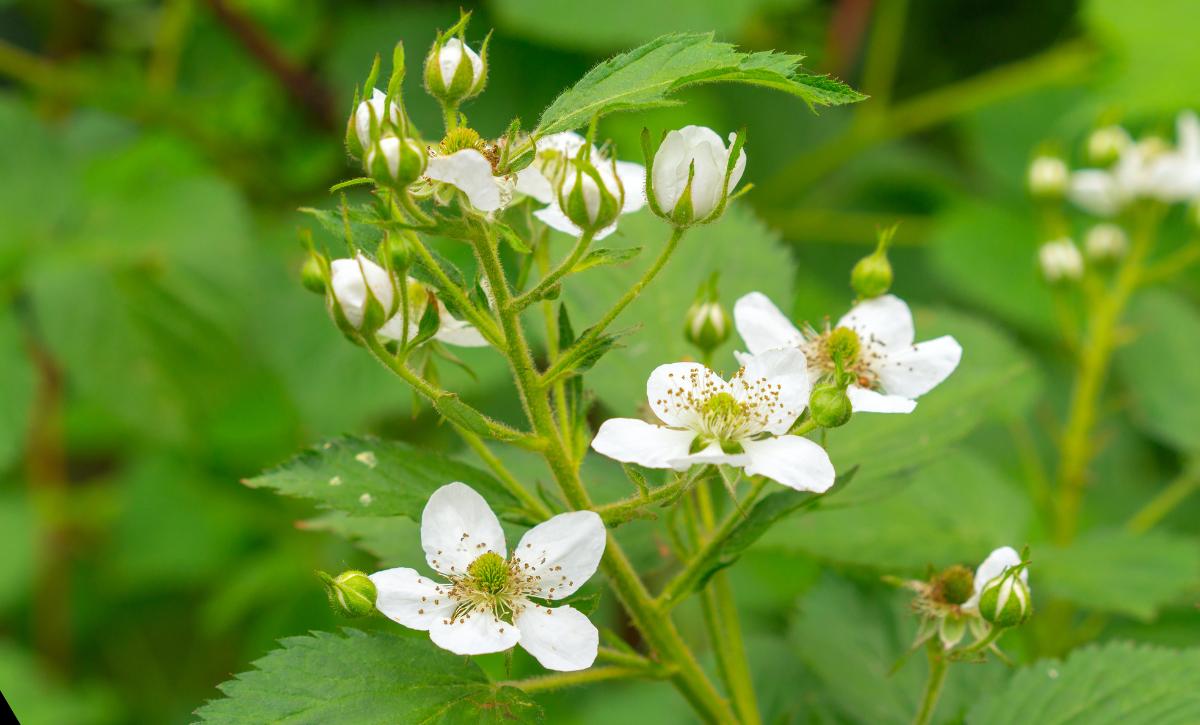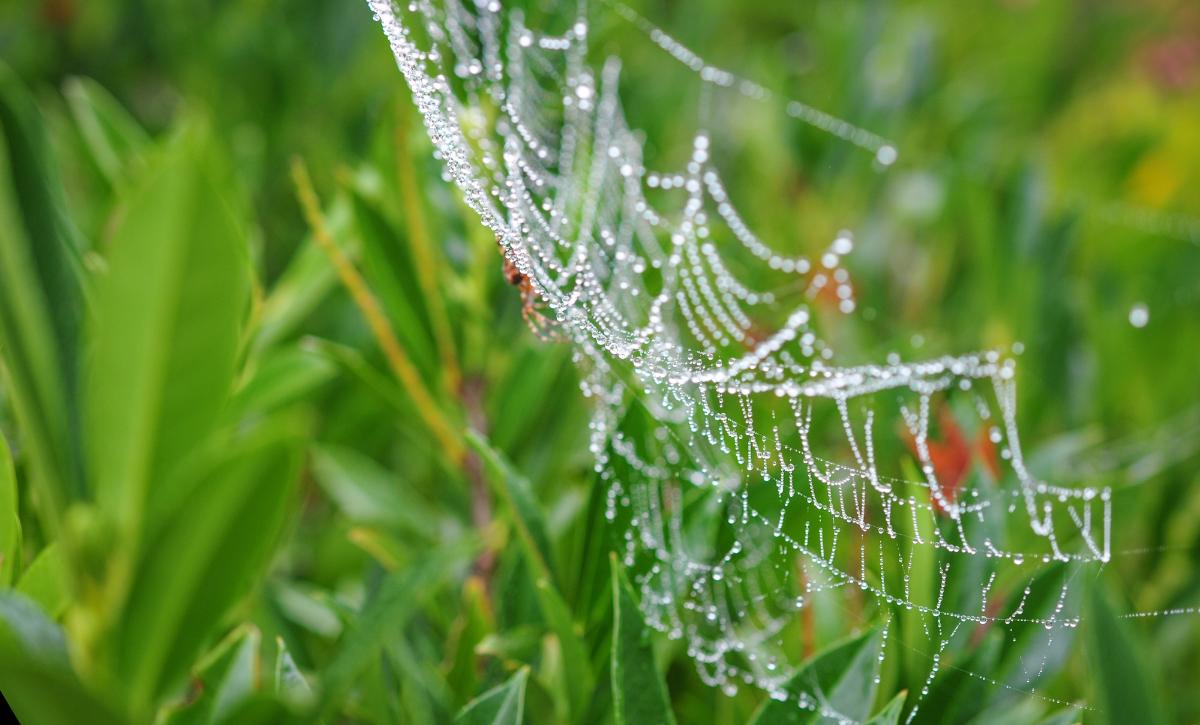As a beginner gardener, a plant-loving friend of mine advised me to build a garden bed first. It sounded so strange, and I couldn’t understand it then.
I always considered gardening a straightforward task: digging holes and planting seeds. I didn’t even put much consideration into the type of plants I was going to grow!
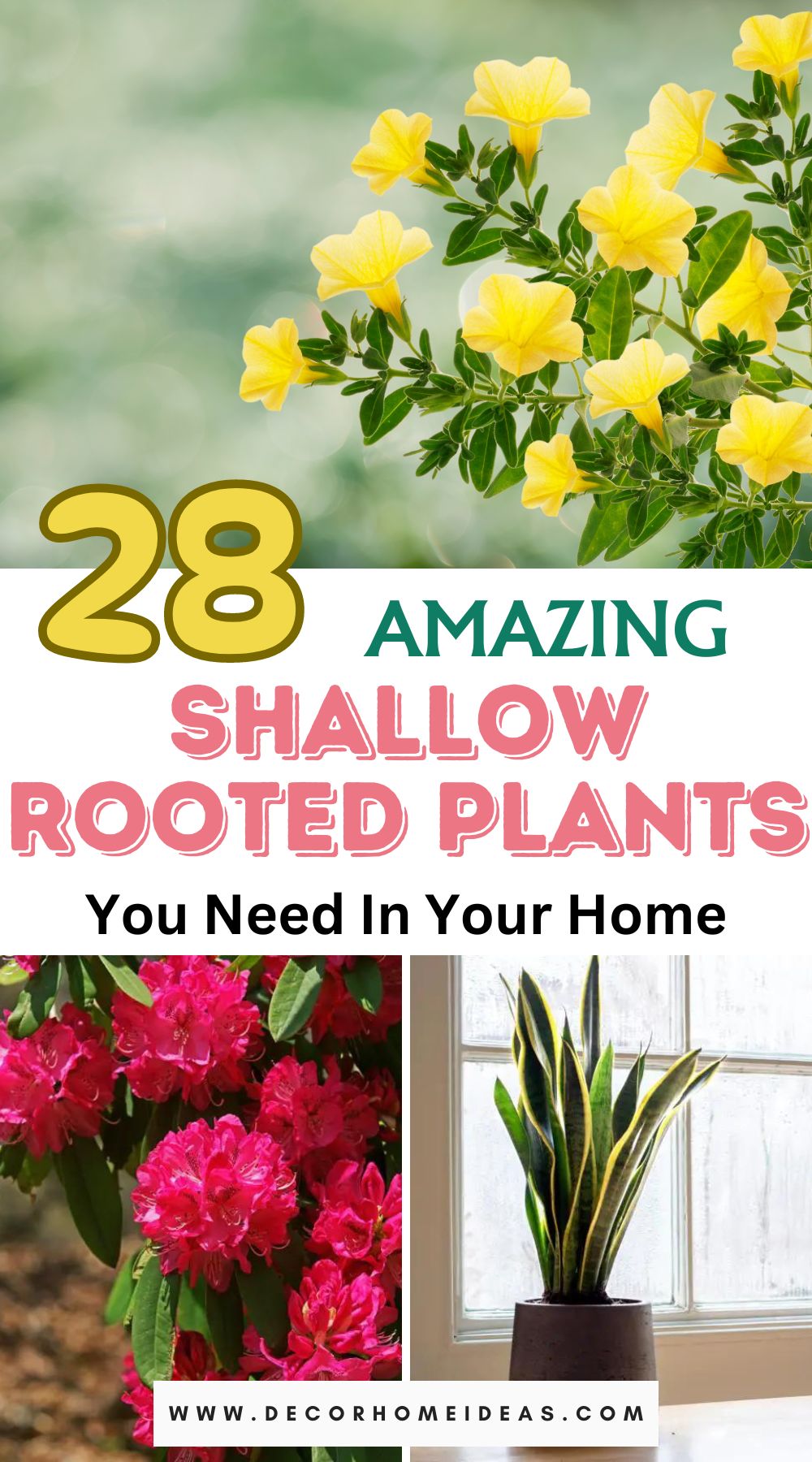
I was also unaware that I could utilize space more effectively if I grew shallow-rooted houseplants.
Shallow rooted plants are the perfect choice for a beginner gardener, especially if you have a small garden. This is why picking plants according to their root type is essential.
This article will discuss various shallow-rooted houseplants, herbs, and veggies. They are pretty easy to grow and will adorn your garden; others are even delicious!
Shallow Rooted Plants
Stepping into the plant world can sometimes be confusing – so many plant parts, species, genera, and families – the list always continues!
However, you’ll quickly learn the ropes once you start growing plants.
The most important thing to remember is that plant flowers, stems, and leaves can’t be produced when there’s an insufficient amount of food.
Plants can have deep or shallow roots, and that’s where food comes from. For instance, cucumbers have only one root: the taproot.
These roots take up a lot of space beneath the ground and can grow deep.
Some plants, on the other hand, have shallow roots which occupy only a tiny space beneath the surface of the soil.
Some vegetables with these roots include radishes, spinach, kale, and broccoli. Flowering plants like petunias, hydrangeas, salvias, hostas, and azaleas also have shallow roots.
Furthermore, houseplants such as panda plants, snake plants, some succulents, and herbs like basil, rosemary, and mint have shallow root systems.
Let’s dive into the details!
Vegetables with Shallow Roots
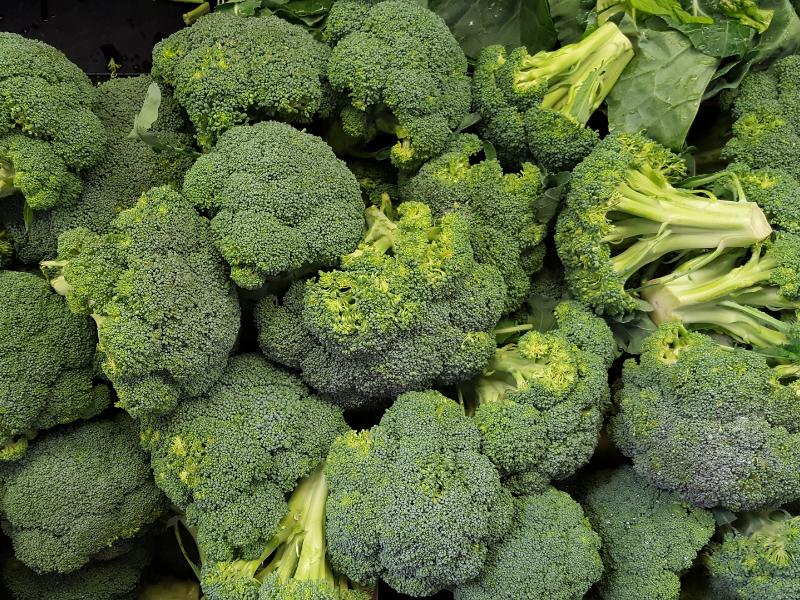
various plants which share this feature, including kale, cabbage, and broccoli.
Other shallow-rooted veggies you can grow include onions, spinach, chard, or radishes.
Broccoli
You’ll start seeing roots developing during the second broccoli growing stage. One exciting thing about broccoli roots is that they begin growing at great depth, but the root growth rate declines as the plant matures.
You can grow broccoli from seeds or stems. The vital information you need to understand about broccolis is that the variety will determine the depth of the root system.
‘
Regular fertilization is the best way to encourage broccoli’s growth since the veggie needs a lot of nutrients.
Broccoli plants require moist soil to thrive, so water them at least once a week.
Kale
Kale can thrive in chilly weather and is a veggie suitable for shallow pots.
Plant your kale in a pot filled with 6 – 8 inches of suitable potting mix at about half an inch depth.
The only thing you need to pay attention to when planting is the spacing between each kale plant; 4 inches will be okay for smaller varieties.
Don’t expose your kale to high temperatures; it can lead to low-quality crops, decreased growth rate, and bitter taste.
Kale can’t tolerate waterlogged soil due to their shallow roots, making them highly susceptible to root rot.
The soil should be moist but never soggy.
Spinach
Spinach is another shallow-rooted plant, and you don’t have to be an expert gardener for your spinach to flourish.
You can grow spinach in containers, making them an excellent option for beginner gardeners. Put your spinach seeds into a 6 – 8-inch deep pot. New spinach plants have a fast growth rate, so you’ll be harvesting within no time!
The width of your container will determine the number of spinach plants you can grow in it.
Spacing is another critical factor when growing spinach; leave a space of about 5 – 6 inches between each plant.
Water the plants frequently and apply a slow-release fertilizer. You’ll also need to find a good sunny spot for your spinach to thrive.
You may require grow lights if you decide to grow your spinach indoors.
Radishes
Radishes are perennial plants that don’t require deep soil, even though they grow beneath the surface.
Radishes are suitable for container gardening, and you can use them as a companion for other container plants since they prevent pests from attacking other veggies.
You’ll need to find a sunny spot for these veggies since they don’t tolerate shade. Apply a phosphorus-rich fertilizer for optimal growth.
Overly wet or soggy soil is a big issue for radishes, mainly seeds. As such, ensure you don’t overwater them, or else they’ll die!
We recommend using drip irrigation systems for the best outcome.
Cabbage
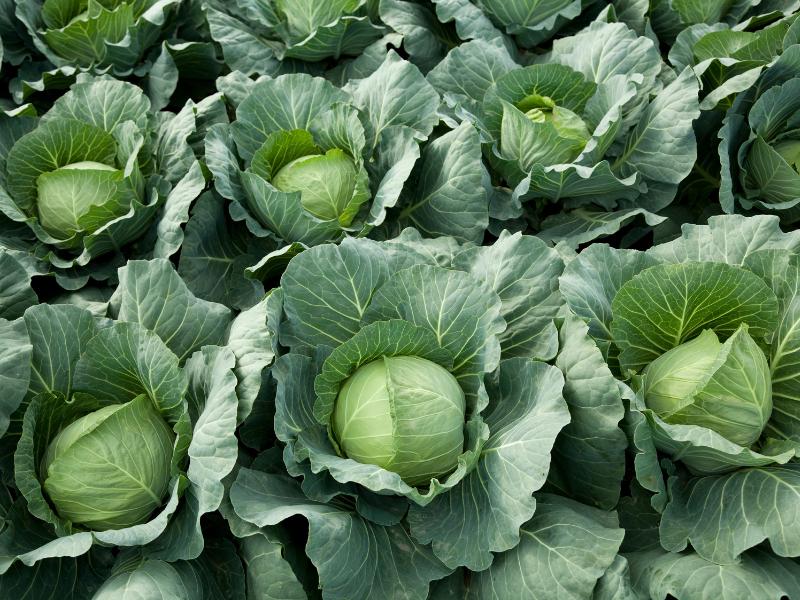
Cabbage is quite a big plant, but you’d be surprised at its roots below the soil line.
The variety of cabbage usually determines the length of the roots, but standard cabbage varieties typically have approximately 18 – 30-inch deep roots.
The Chinese cabbage’s roots can reach up to 2 inches deep.
Similar to other shallow-rooted plants, cabbage also requires frequent watering. However, cabbage plants have a much better drought tolerance than their cousin broccoli.
Frequently water your cabbage at the end of the growing season since underwatering can lead to the heads splitting.
Use a nitrogen-rich fertilizer to have cabbage plants with a fantastic taste!
Onion
Onions are biennials with shallow roots, and you can find them in almost every vegetable garden.
Onions have ten growing stages, which they can go through quickly if all their requirements are met. You won’t spend much time caring for your onions, so don’t worry.
Onions require well-aerated, loamy soil and are acidic-loving plants. They also thrive in full sun; some varieties require 14 hours of direct sunlight daily!
Spacing is crucial in onion growing, and you should separate your onion seeds about 2 inches apart.
Furthermore, you’ll need to provide your onions with about 2 inches of water weekly to reach maturity.
Garlic
Garlic is an easy plant to grow, and it’s on our top 10 list of veggies due to its amazing taste. Shallow-rooted garlic varieties can develop roots even up to 2 inches long.
Watch for pests that may attack your garlic, and fertilize it regularly.
Mulch the soil to aid your garlic if you live in climates susceptible to frost. You can remove the mulch after the winter months have passed.
Avoid planting your garlic near plants with the exact nutrient requirements since it’s very competitive regarding nutrients.
Arugula
Arugula is a low-maintenance veggie with roots that can grow from 12 – 18 inches long.
Arugula requires rich, well-draining soil with a pH of 6.0 – 6.8. Don’t let the soil completely dry between waterings since these plants prefer moist soil.
Try growing your arugula in a raised bed; you won’t regret the outcome!
Shallow Rooted Flowering Plants
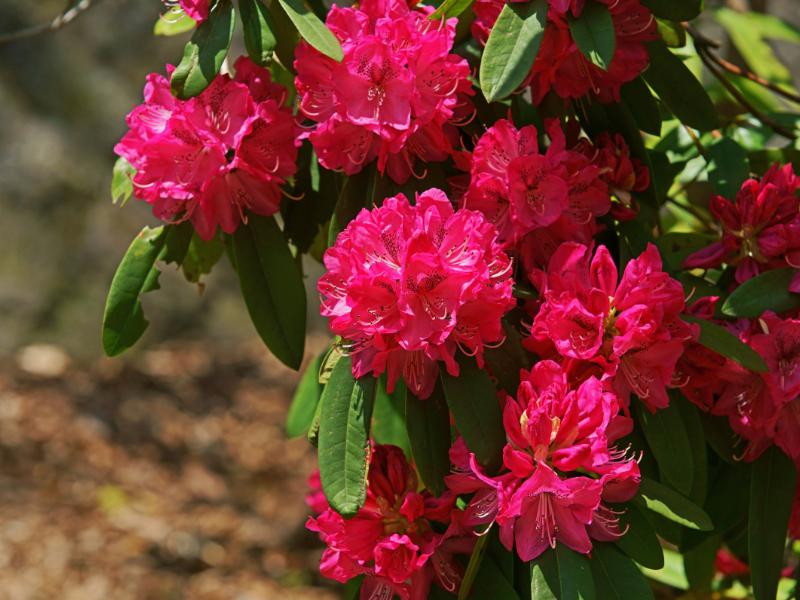
Now that we’re done with the veggies let’s focus on flowering plants with shallow roots!
Rhododendron & Azalea spp.
Planting shallow-rooted azaleas can be a bit tricky since you might have a case of ‘sinking’ roots if you grow them too deep.
Mulch your plants with something like pine needles to avoid this. You’ll help the soil retain moisture and protect the roots.
You’ll need to deadhead your azaleas and rhododendrons after blooming to encourage vegetative growth.
Winter can be challenging for these plants. Therefore, protect your plants with burlap or add layers of mulch as the winter months approach.
Salvias
Salvias are probably one of the most low-maintenance plants you’ll ever encounter. They require a lot of direct sunlight to produce their beautiful flowers, which come in shades of pink, purple, yellow, white, and red.
Add garden grit and compost to ensure good drainage and a sufficient supply of nutrients. Compost is actually the only fertilizer your salvias will need!
Lilacs
Lilacs are shallow-rooted, old-school flowering shrubs or trees.
Lilacs can grow fine independently since they aren’t fussy plants and are pretty well-known due to their beautiful and fragrant flowers.
Water your plant when there isn’t at least 1 inch of weekly rainfall.
Triple 10 fertilizer is ideal for these plants since they’re susceptible to overfertilization; apply it in late winter.
Also, add mulch and compost to your lilacs to help the soil retain moisture and give your plants sufficient nutrients.
Hostas
clay-based soil and simply require well-drained soil.
Use regular potting soil if you plan on growing hostas in pots, and amend the soil with organic matter.
Hostas aren’t drought-resistant, so they won’t flourish in more extended periods of drought.
The good thing about hostas is that temperature and humidity don’t affect them; they keep growing.
Wind is the main thing to be concerned with regarding weather since it can damage your plants.
We recommend using compost only if you choose to feed your hostas.
Periwinkle
Periwinkle is another shallow-rooted plant and belongs to the Vinca family. Periwinkles are typically grown as groundcovers.
We recommend growing periwinkle for beginner gardeners since it’s a hardy perennial that can survive even the most harsh conditions.
Encourage the growth of your periwinkles by providing rich soil and enough dappled sunlight.
However, as stated earlier, periwinkles can flourish in any condition.
You can choose between major (bigger) and minor (smaller) varieties.
Barrenwort
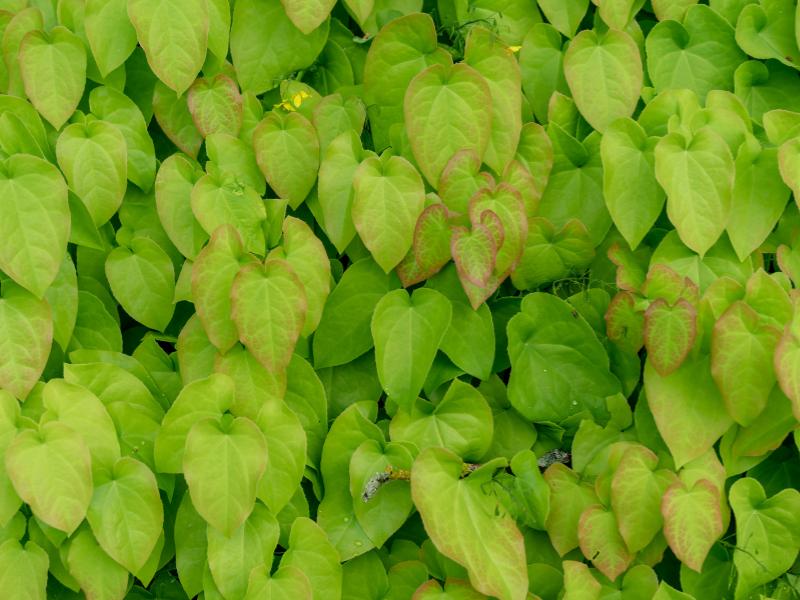
Barrenwort is a shade-loving epimedium and shallow-rooted perennial.
This unusual plant has colorful flowers and heart-shaped leaves, making it a favorite among many enthusiasts.
Barrenwort can survive harsh conditions and thrives in USDA plant hardiness zones 3 – 9.
Barrenwort is also a suitable plant for beginner gardeners since it’s drought-tolerant. Provide your barrenwort with a company of flowering bulbs for the best results.
Bugleweed
Bugleweed works great as groundcover and is a very common shallow-rooted plant.
Encourage your bugleweed’s growth by providing abundant sunlight and a humid environment.
Bugleweed is considered invasive in some places in America, so be very careful with it.
This attractive plant has colorful flowers and dark green leaves and is the best option if you’re unsure of the correct growth conditions.
Lavender
It’s almost impossible to choose between the scent and color of the amazing lavender plant!
Lavender thrives in shallow soil and doesn’t have deep roots. Even though lavender can tolerate partial shade, we recommend exposing it to direct sunlight as much as possible.
Ensure temperatures range between 70 – 75℉.
Lavender can grow in almost all soil types. However, it would be best to base your watering schedule on your chosen soil type.
You won’t have to supplement the soil with organic matter or boost the growth of your lavenders.
Petunia
Petunia plants have trumpet-like flowers, which give them a top spot on the list of most beautiful plants.
You need to pay close attention to moisture since petunia plants have pretty shallow roots, and the soil may dry quickly.
We recommend adding organic matter to the substrate to avoid problems with dry soil. Organic matter helps with water retention.
Petunias won’t tolerate temperatures below 40℉. Therefore, it’s vital to regularly fertilize them and provide them with full sun to experience the true beauty of the flowers.
Zinnias
Zinnia plants are ideal if you want a plant to act as a border.
Zinnias are sun-loving plants, so place them in the right spot.
Avoid placing your Zinnias in wet soil since their shallow roots can rot quickly.
Zinnias aren’t picky regarding soil; they can grow even in poor soil.
Hydrangeas
Hydrangeas can’t grow well in poor soil that retains too much water and prefers organic matter, unlike Zinnias.
Hydrangeas aren’t heavy drinkers and require at least 1 inch of water weekly to thrive.
You can feed your hydrangea with fertilizer, but the hydrangea variety will determine what fertilizer you can use.
We recommend performing a soil test before you begin adding supplements.
Shallow Rooted Herbs
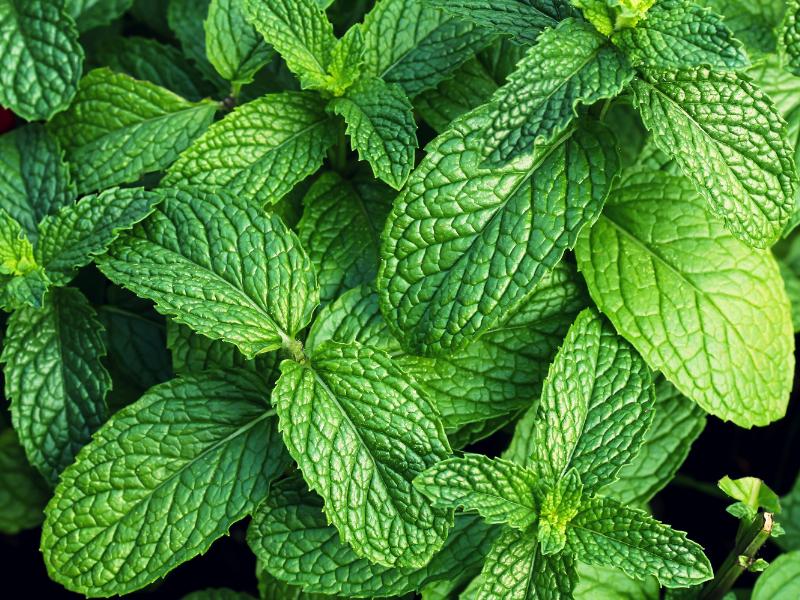
The following is a list of popular herbs perfect for indoor container gardening and outdoor gardening.
Mint
Mint belongs to the Lamiaceae family and is a low-maintenance perennial with a distinguishing scent.
Mint is a pretty common plant and very popular among spice-loving fans since it’s one of the hardiest plants and can grow anywhere.
A distinctive characteristic of mint is that it has a stem that bends over when mature and can produce roots when it comes into contact with the soil.
As such, mint can spread rapidly, and you’ll have to control its growth unless you want your garden to be full of mint!
It would be best to dedicate a particular area for only the growth of mint to control its growth easily.
Mint requires high humidity, rich soil, full sun or partial shade, and watering during dry periods to thrive.
We recommend growing the peppermint variety if you reside in USDA hardiness zone 3.
Rosemary
I’m sure you’ve encountered rosemary, especially if you have tried Mediterranean dishes.
You can grow rosemary in your garden, making any dish tastier! Rosemary is also ideal for container gardening.
This long-lasting plant requires a lot of full sun and flourishes in warmer climates. You must provide it with well-draining soil for it to last.
Your rosemary won’t need much fertilizer; add a liquid-balanced fertilizer or compost to the soil to give this fragrant plant the nutrients it needs.
Basil
If you ever thought that basil was Italian, think again! It’s actually an Indian herb!
You can grow basil as a perennial if you live in USDA hardiness zones 10 -11.
Consequently, you can grow basil annually in all other USDA hardiness zones.
The goal should be to produce many leaves and promote bushy growth when growing this herb. Still, this can be challenging since you need to trim the top leaves once the plant starts to mature.
Letting your basil bloom will produce seeds instead of leaves, leaving you with many seeds but only a few leaves.
You’ll also need to provide your basil with direct sunlight for a couple of hours daily and regular watering. Add a nutrient-rich mulch to help the soil retain moisture.
Unlike other shallow-rooted plants, your basil will require food to produce tasty leaves.
Houseplants with Shallow Roots
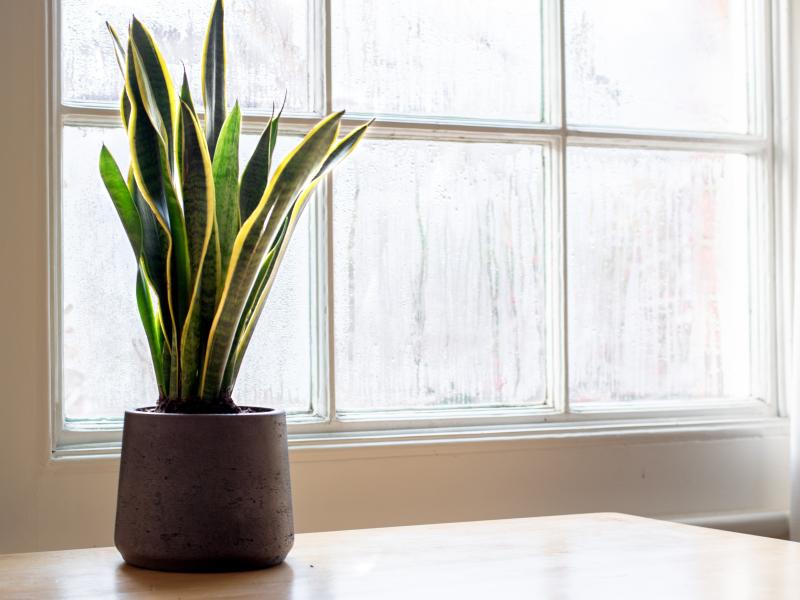
The following list includes plants you can grow in shallow pots and adorn your home decor.
Snake Plant
The snake plant is one of the most popular houseplants in the world.
The name has no relation with snakes, of course, nor does it attract any. The snake plant is a low-maintenance plant that boasts remarkable, variegated, succulent-like leaves.
Most people are usually concerned about the growth rate of snake plants since they may sometimes seem as if they aren’t growing at all.
They get pretty tall when they reach maturity, so these plants having shallow roots is somewhat surprising.
Snake plants flourish in bright, indirect light and well-draining soil.
You can easily overwater this plant since it has shallow roots. Therefore, change your watering habits if you notice the snake plant’s leaves splitting.
Snake plants can thrive in different temperatures, but the most ideal would be between 65 – 85℉.
Use a 10 10 10 fertilizer diluted to half strength to boost the growth of your plant twice during its growing season.
Panda Plant
The panda plant, also known as Kalanchoe tomentosa, is native to Madagascar. This plant has a cheery appearance that your children will surely adore. However, the plant is toxic to pets, so keep it away from dogs and cats.
The panda plant requires bright indirect light to flourish, but the shallow-rooted succulent can also benefit from a little direct morning sunlight.
Keep in mind that succulents can store water in their leaves. Therefore, they don’t require much water, especially during winter. Don’t allow your panda plants to sit in waterlogged soil.
Soil suitable for succulents and moderate humidity is an excellent combination your panda plant will appreciate.
Aloe Vera
Aloe vera leaves contain a soothing gel with numerous health benefits, making it a common houseplant.
The plant is also relatively easy to grow, making it ideal for beginners.
Aloe vera prefers acidic and sandy soil, so we recommend buying a ready-made succulent soil mix to avoid complications.
Where your aloe grows will determine the amount of lights it needs. For instance, outdoor aloe vera plants benefit from direct morning sunlight and some afternoon shade.
Indoor aloe veras, on the other hand, don’t tolerate direct sunlight, which can scorch their leaves or permanently damage the plant.
Zebra Plant
This is the perfect plant for those who love challenges! Even though the zebra plant is regarded as an easy-to-grow plant, a few things might need to be corrected.
First, it requires high humidity (about 70%) and warm temperatures (over 60℉). The soil should be moist, and you shouldn’t expose your plant to direct sunlight as it can kill it.
Conversely, keep your zebra plant away from total shade since it won’t bloom without light.
You’ll need to fertilize your plant every two weeks during its growing season.
Your shallow-rooted zebra plant will flourish in no time if you meet these requirements.
Prayer Plant
plants.
Ensure your plant receives plenty of food, good airflow, high moisture, and warm temperatures if you decide to grow it; these are conditions found in greenhouses,
Prayer plants are prone to root rot and don’t like soggy soil.
Well-draining soil is crucial for prayer plants. Furthermore, use an all-purpose, water-soluble fertilizer to feed your plant every two weeks during its growing season.
Summing Up
I hope this article has helped you find inspiration for growing shallow-rooted plants!
We highly recommend these plants to beginner gardeners since they’re the easiest to repot houseplants and ‘hardest’ to kill.
Easy repotting is essential as it helps you deal with problems such as overwatering quickly, giving your plant a high chance of survival.
The only thing left is to get yourself a shallow-rooted plant and enjoy its growth!
Ciao! Until next time!

